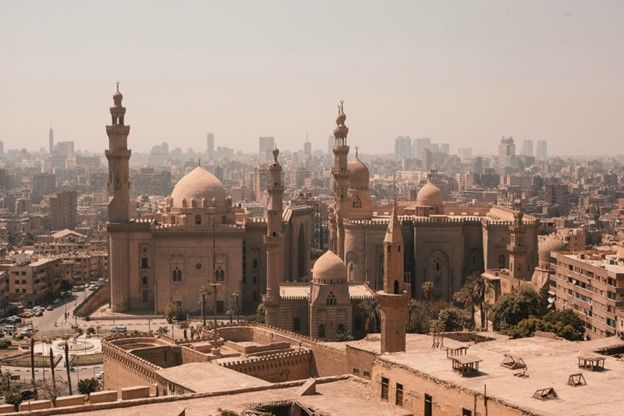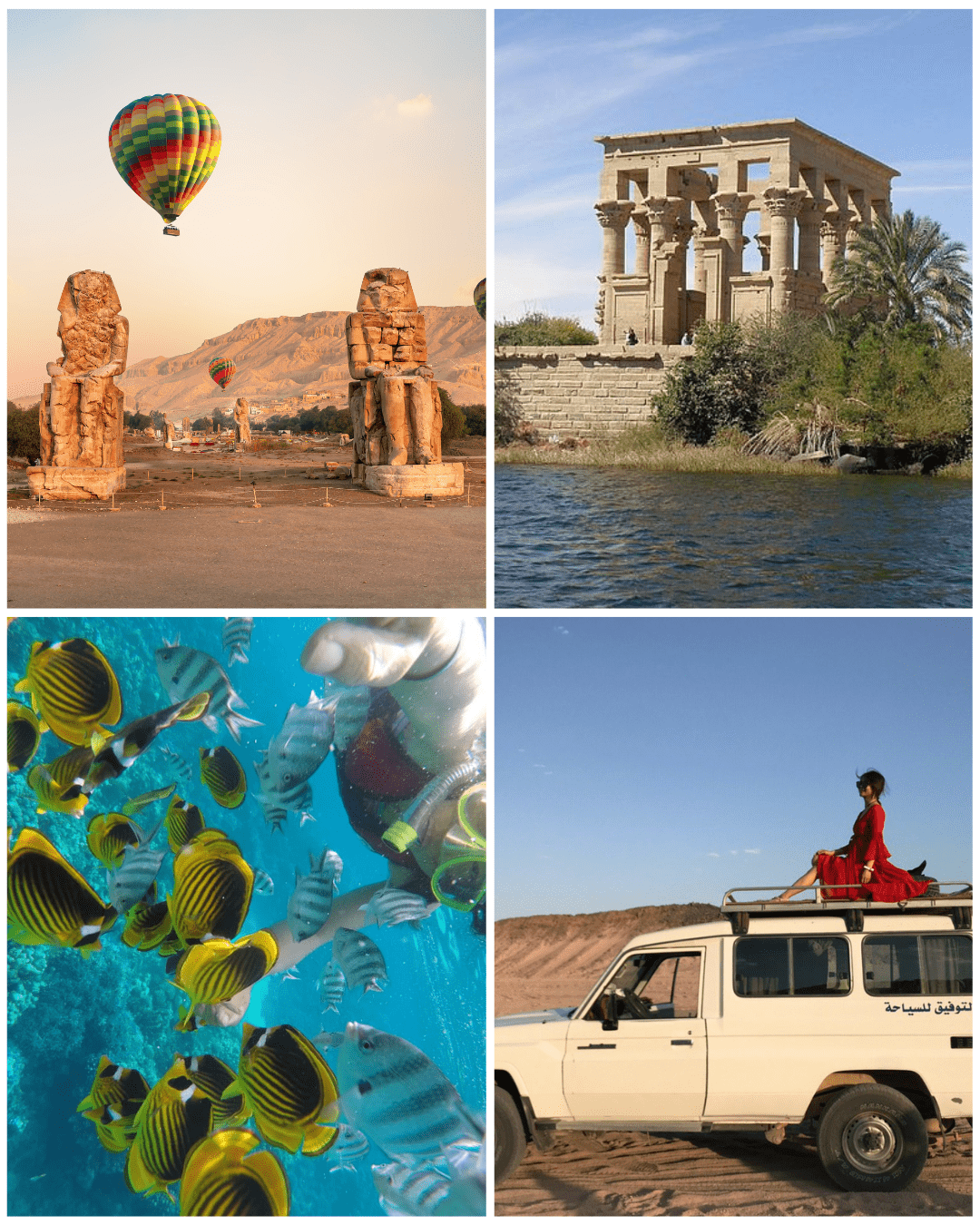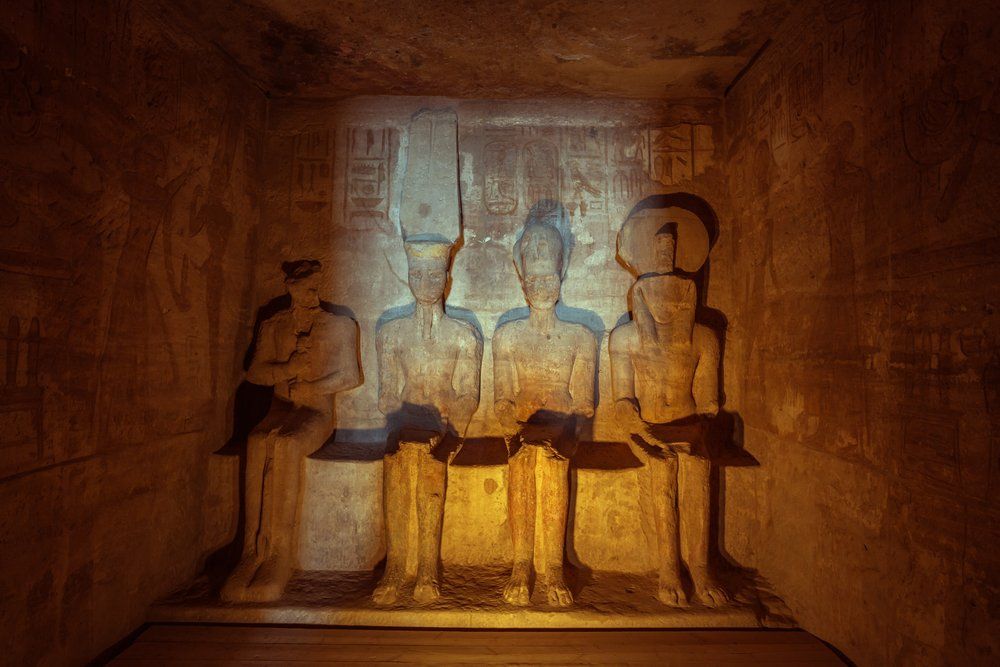Everything you need to know about Abu Simbel Temples
About Abu Simbel Temples
Abu Simbel, a pair large, rock-cut temple, is located in Abu Simbel (Upper Egypt), close to the Sudan border. They are located on the west bank, just north of Lake Nasser, and about 230km southwest/140 miles (by road) from Aswan. The complex contains two enormous carved monoliths, one of which depicts Ramesses II and the other his statue holding weapons to defend them against any attackers who might dare challenge their Pharaoh's authority. It also houses an English translation plaque that tourists can use to locate what they are looking for when they visit this site. They then run upstream into Philae, and continue onward.
The Abu Simbel temples are a permanent monument to Ramesses II. The figures of his wife Nefertari, and their children can be seen at feet - considered less important than them yet given same scale because it commemorates victory at Battle Kadesh. These huge rock reliefs now iconic with these three small ones in background showing off skills learned from battles fought beforehand that helped shape history as we know it today!
Kazimierz Michalowski, director of the Polish Centre for Mediterranean Archaeology in Warsaw and his team moved Abu Simbel Temples to a new location after Egypt's Minister of Antiquities directed them to be relocated due their proximity near Lake Nasser. They placed it on top an artificial hill made out dome-shaped structures which are high above Aswan High Dam where they would have been destroyed by floods if not removed beforehand; this project was parts of UNESCO’s campaign known as "Nubian Salvage."
Construction
Ramesses II began a vast building program in Egypt and Nubia during his reign. Egypt was the sole owner. The Egyptians considered Nubia a very important area because of its rich supply of gold and other valuable trade goods. To impress the Nubians with Egypt's power and Egyptianize them, he built many grand temples there. The Great Temple is dedicated to Ramesses II, while the Small Temple is dedicated to Queen Nefertari, his chief wife which indicates the high status of women in Ancient Egypt.
The construction of the temple complex began in 1264 BC. It lasted approximately 20 years until it was completed in 1244 BC. It was also known as the "Temple of Ramesses", beloved by Amun.
Rediscovery
The temples became increasingly unusable over time and were eventually covered in sand. The statues of the main temple were covered in sand by the 6th century BC. Johann Ludwig Burckhardt, a Swiss orientalist, discovered the temple's top frieze in 1813. Giovanni Belzoni, an Italian explorer, visited the site and spoke to Burckhardt about his discovery. However, Belzoni was unable to find an entrance to the temple. Belzoni returned to the site in 1817 and succeeded in his attempt at entering the complex. Edward William Lane's Description Of Egypt (1825-1828) contains a detailed description of the temples and contemporaneous line drawings.
Relocation
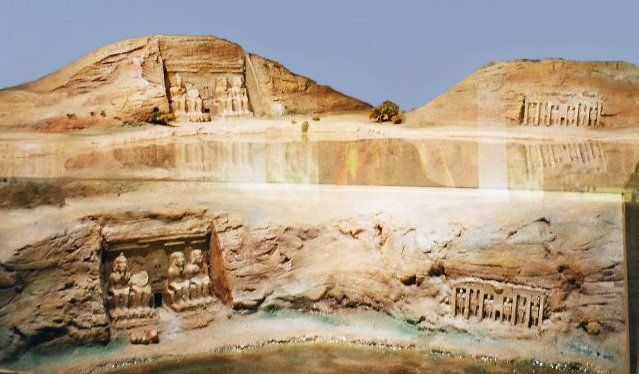
1959 saw the start of an international campaign to save Nubia's monuments. The southernmost relics this ancient civilization were at risk from rising waters of Nile, which were set to follow the Aswan High Dam.
The Nubian Museum in Aswan has a scale model that shows the location of the temple relative to its current level.
William MacQuitty had an idea to create a freshwater dam around temples. The water inside would be kept at the same height and level as the Nile. This was one of the ways to save them. Underwater viewing chambers were planned. The idea was proposed by Jane Drew and Maxwell Fry, architects, and Ove Arup, civil engineer. They believed that the desert winds would cause erosion and the temples could be raised. Despite being considered very elegant, it was rejected.
A multinational team of engineers, archeologists and heavy equipment operators began salvaging the Abu Simbel temples in 1964. It cost US$40million (equivalent to $300 million in 2017). The entire site was meticulously cut into blocks weighing up to 30 tons each, with an average weight of 20 tons. They were then lifted, dismantled and reassembled at a new location, 65m higher than the river and 200m from the river. This was one of the most difficult feats of archaeology in history. Some structures were even preserved from the water of Lake Nasser. Today, the temples are visited by a few hundred people daily. Many tourists also travel by air to the temple complex from Aswan or via road.
Two temples make up the complex. The main temple is dedicated to Raharakhty, Ptah, and Amun, Egypt's three major state deities at the time. It also features four large statues by Ramesses II in its façade. The smaller temple is dedicated the goddess Hathor. It is Nefertari's favorite of Ramesses's many wives.
Great Temple
It took twenty years to build the Great Temple at Abu Simbel. This was around 24 years of Ramesses The Great's reign (which corresponds roughly to 1265 BC). It was dedicated to the gods Amun and Ra-Horakhty as well as the deified Ramesses. It is the largest and most beautiful temple built during Ramesses II's reign, and the most beautiful in Egypt.
Entrance
Four massive statues flank the single entrance, each measuring 20m high (66 feet).
The facade is 33m (108ft high) and 38m (125ft wide). This was a final step towards securing peace between Egypt, Hittites.
Bas-relief images depicting Ra Horakhty (falcon headed), are placed above the entrance doorway. Ra is holding Maat, the hieroglyph-user goddess of truth (and justice), in his one hand.
Interior
The temple's inner portion has the same triangular layout as most Egyptian temples. Rooms decrease in size from the sanctuary entrance. Because of the many side chambers, the temple's complex structure is quite unique. The 18-m (59 feet) long hypostyle hall (also known as a pronaos), is supported by eight Osirid (related to god Osiris) columns depicting the deified Ramesses, which are linked to Osiris, the god of fertility, agriculture and the afterlife. It is meant to symbolize the eternal nature of the pharaoh. The massive statues on the left-hand side bear the white crown from Upper Egypt and those on the other side wear the double crowns of Upper Egypt and Lower Egypt (pschent). Bas-reliefs adorn the walls of the pronaos and depict battle scenes from the military campaigns the Ramesses waged. The sculpture is largely dedicated to the Battle at Kadesh on the Orontes River in Syria. This was the battle in which the Egyptian king defeated the Hittites. Other scenes depict Egyptian victories over Nubia and Libya.
The hypostyle hall leads to the second pillared hall. It has four pillars that are decorated with scenes depicting offerings to the gods. The hall features depictions of Ramesses, Nefertari and the sacred boats of Amun (Ra-Horakhty) The sanctuary is accessed through this hall via a transverse vestibule. On a black wall are rock-cut sculptures of four figures seated: Ra-Horakhty (the deified king Ramesses), and the gods Amun Ra or Ptah. Ra-Horakhty and Amun Ra were the principal divinities of that time and their cult centers at Heliopolis and Memphis were respectively.
Solar Alignment
The ancient Egyptian architects positioned the temple's axis so that, on 22 October and 22 February 22, the sun would shine through the sanctuary, lighting the sculptures along the back wall. This was except for Ptah, who is believed to be a god associated with the realms of death and who has always remained in darkness. These days, Abu Simbel is crowded with people who want to see this.
These dates are said to be the coronation and birthday of the king. This is not supported by any evidence. However, it is reasonable to suppose that these dates were related to some significant event. According to archaeologists' inscriptions and calculations based on the heliacal rising star Sirius (Sothis), this date was October 22. The energy of the sun boosted the image of the king and made it more vibrant. Ramesses, the Great, could have occupied the place of Amun-Ra or Ra-Horakhty.
Due to the Tropic Of Cancer's accumulated drift over the past three millennia due to Earth's axial Precession, the date of the event must have been different at the time the temple was built. This is made worse by the fact the temple was moved from its original location, so the alignment may not be as exact as the original.
Small Temple
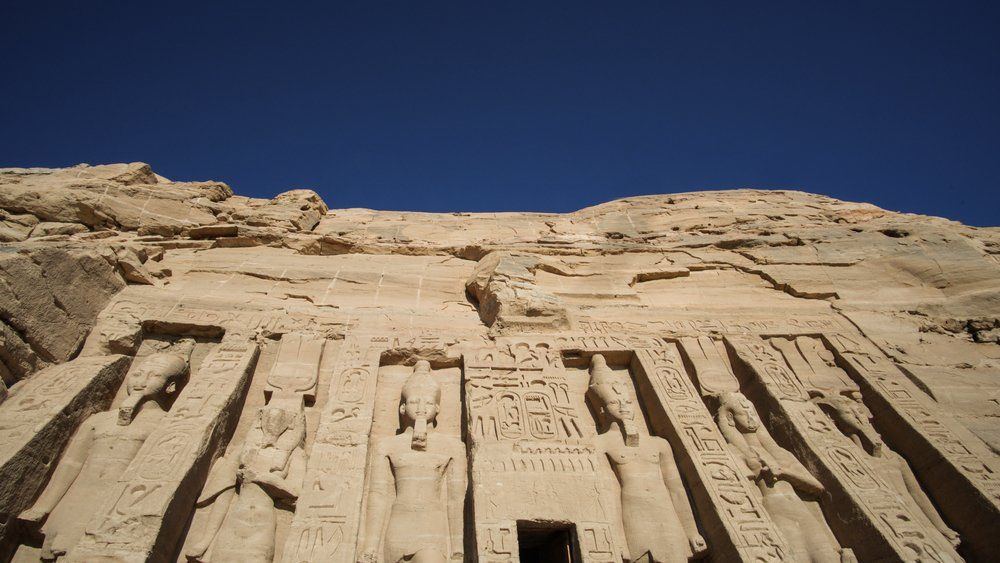
One hundred meters to the north of the larger temple is the small temple of Queen Nefertari. This temple was built into the rock that is part of "The Pure Mountain", or "The Northern Mountain" by ancient Egyptians. King Ramses made use of this belief to build a temple for Queen Nefertari, the goddess Hathor, and also created a smaller temple.
Six statues make up the facade of this small temple. It is composed of six statues. Nefertari had twelve views. He had seventeen views. Four statues were also made at Nefertari's façade.
The temple's façade measures twelve meters high by twenty-eight metres wide. It is divided into 2 towers. Each tower contains three statues. Two statues in each tower represent King Ramesses II and the third his wife Nefertari. Queen Nefertari is dressed in a transparent, long-sleeved gown and holds the tool clay in both her hands. The Hathori crown (related to goddess Hathor) is made up of two feathers, and the sun disk.
How to get there
You can get to Abu Simbel from Aswan by land (about 3 hours drive) or even from Luxor. Flights to Abu Simbel are available from Cairo (about 1 hour). It is much better to buy an organized tour to learn about history and architecture of the place. Check our Nile Cruises and Aswan Day Tours



